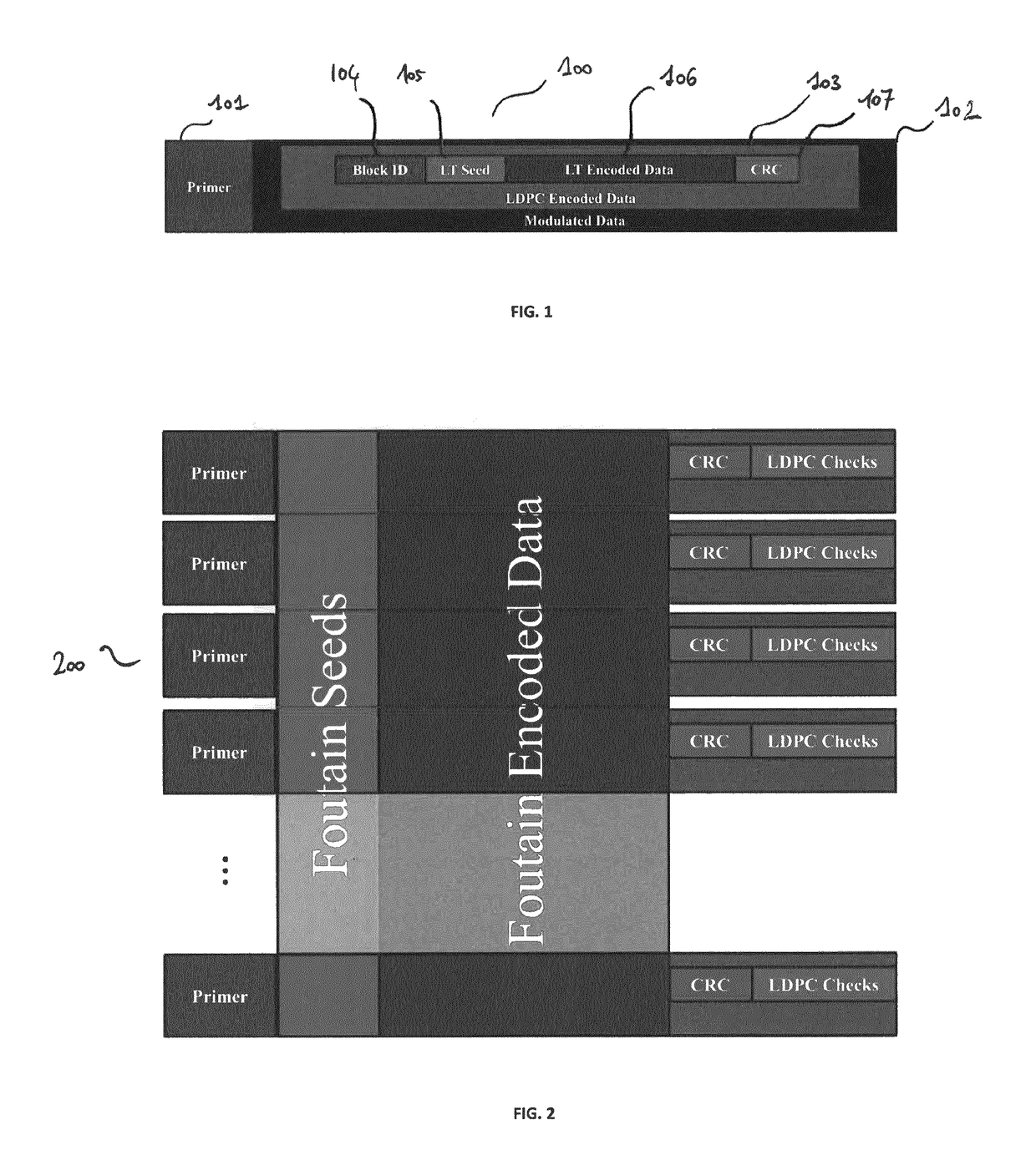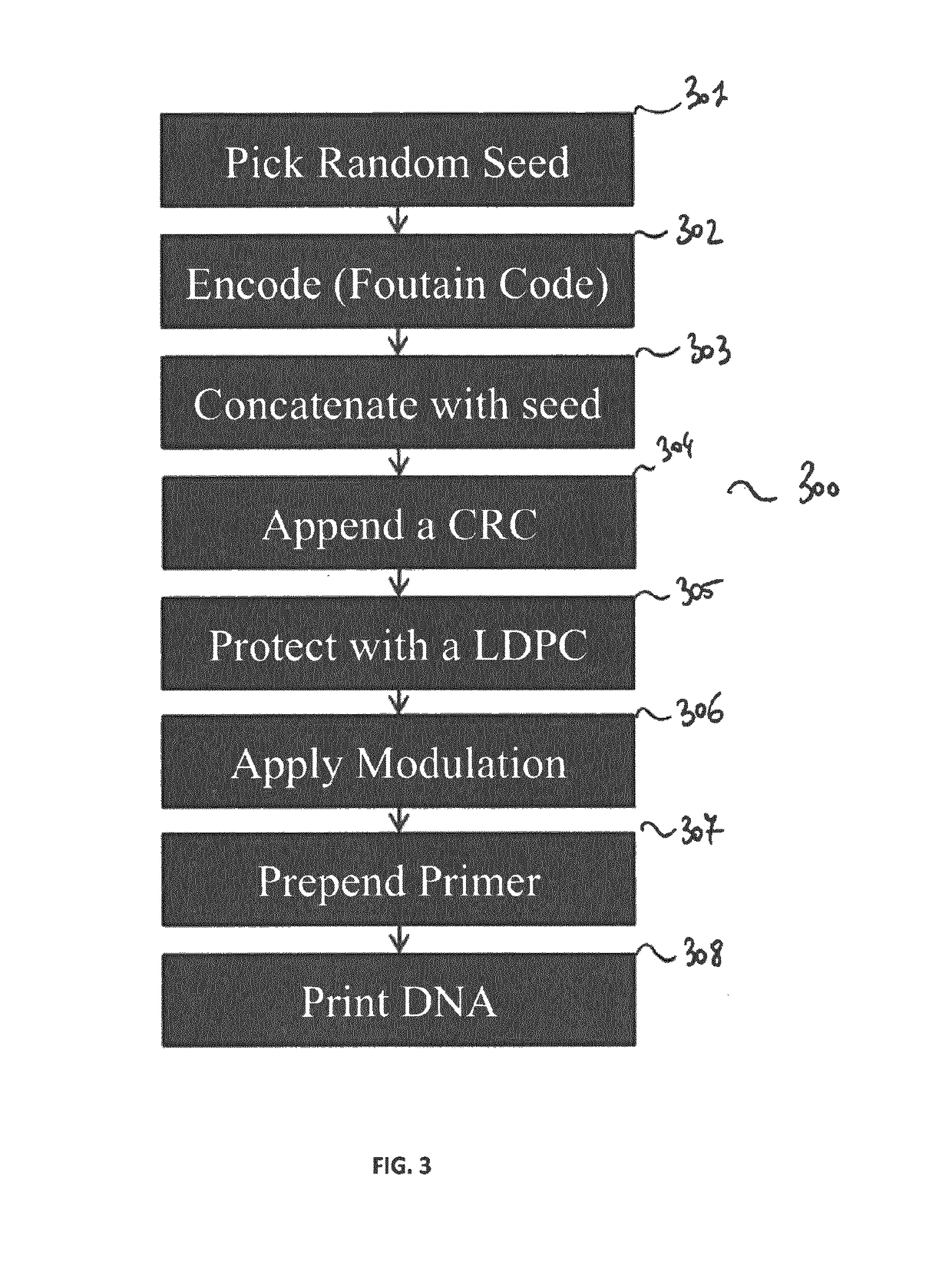Methods for storing and reading digital data on a set of DNA strands
a digital data and dna technology, applied in the field of digital data storage over dna, can solve problems such as high error ra
- Summary
- Abstract
- Description
- Claims
- Application Information
AI Technical Summary
Benefits of technology
Problems solved by technology
Method used
Image
Examples
Embodiment Construction
[0076]As mentioned previously, the proposed technique relies on (i) an inner error detecting / correcting code (e.g. LDPC combined with a CRC) that protects against errors from sequencing and synthesis, and (ii) an outer erasure correcting codes (e.g., fountain codes) for accessing the data efficiently in spite of the random access provided by the sequencing process.
[0077]FIG. 1 presents a DNA strand for storing data, according to one embodiment of the invention.
[0078]The inner code which aims at ensuring that the outer code, which is a fountain code in one embodiment of the invention, will only have to deal with erasures. Indeed, efficiently decoding a fountain code is possible only for erasures but not for errors (i.e., either we get a correct value, or we don't get a value).
[0079]A strand of DNA, depicted in FIG. 1 comprises a short sequence of nucleotides called the primer, referenced 101, and bunch of nucleotides containing the data, referenced 102. The primer 101 is a specific s...
PUM
| Property | Measurement | Unit |
|---|---|---|
| size | aaaaa | aaaaa |
| structure | aaaaa | aaaaa |
| maximum distance | aaaaa | aaaaa |
Abstract
Description
Claims
Application Information
 Login to View More
Login to View More - R&D
- Intellectual Property
- Life Sciences
- Materials
- Tech Scout
- Unparalleled Data Quality
- Higher Quality Content
- 60% Fewer Hallucinations
Browse by: Latest US Patents, China's latest patents, Technical Efficacy Thesaurus, Application Domain, Technology Topic, Popular Technical Reports.
© 2025 PatSnap. All rights reserved.Legal|Privacy policy|Modern Slavery Act Transparency Statement|Sitemap|About US| Contact US: help@patsnap.com



